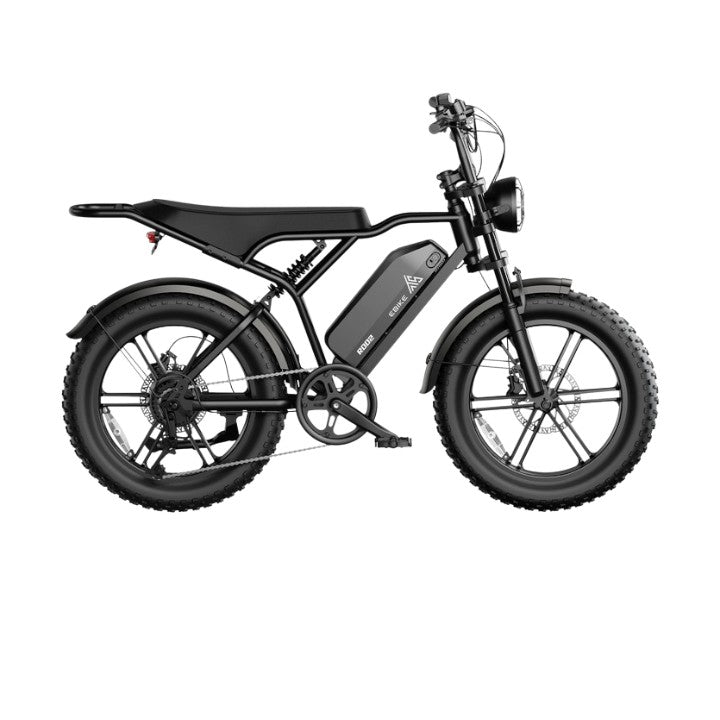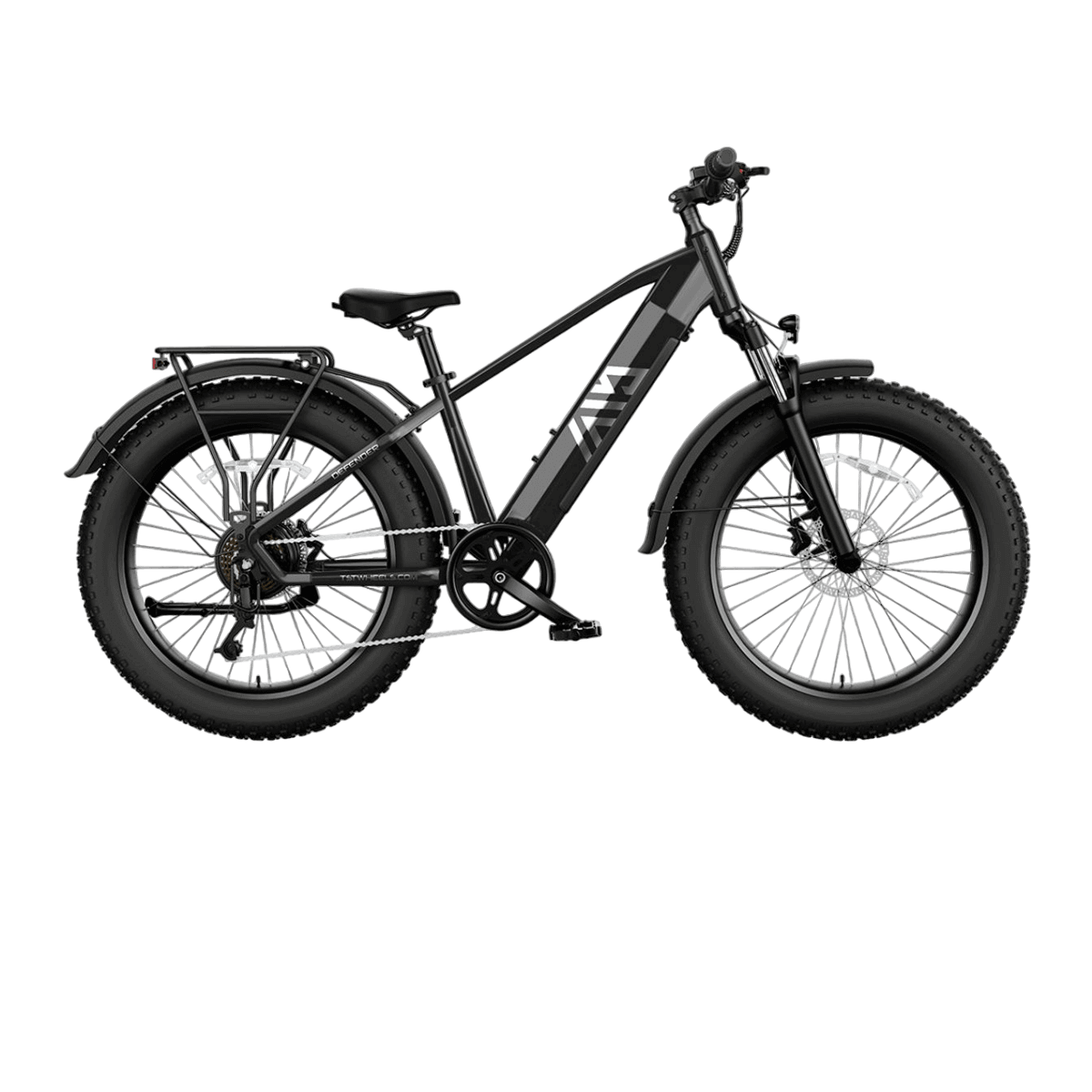Maintaining your electric bike during winter is essential to ensure reliable performance, safety, and longevity. Cold temperatures, moisture, and road salt can degrade batteries, drivetrain components, brakes, and electrical systems. Following proper winter maintenance routines, such as battery care, tire management, cleaning, and storage, helps you enjoy safe and efficient rides throughout the season with models like TST EBike’s 26-inch and 27-inch.
How Should You Prepare Your Electric Bike for Winter Conditions?
Preparing your e-bike for winter involves understanding how cold affects batteries and mechanical parts. Cold weather reduces battery efficiency and capacity, and metal components may contract, affecting alignment and moving parts. Start by gathering essential tools and supplies like cold-weather lubricants, insulated battery covers, tire pumps, and cleaning kits. Installing winter tires or chains improves traction on snow and ice. Proper preparation minimizes winter-related performance issues.
What Are the Best Practices for Battery Care in Winter?
Battery care is critical in winter. Always charge your battery indoors at room temperature and avoid charging when the battery is below freezing to prevent damage. Store batteries separately from the bike in a cool, dry place at about 40-60% charge during extended inactivity. Use insulated covers to maintain optimal battery temperature during rides. Regularly inspect battery terminals for corrosion and clean them gently. These steps help preserve battery health and extend range in cold weather.
Battery Care Temperature Chart
| Temperature Range | Impact on Battery | Recommended Action |
|---|---|---|
| Below 0°C | Significant capacity loss | Use insulated covers, charge indoors |
| 0-10°C | Moderate efficiency drop | Charge indoors, monitor usage |
| Above 10°C | Optimal performance | Regular use and charging |
How Can You Maintain Tires and Traction for Winter Riding?
Switch to winter-specific tires with deeper treads or studded tires for icy conditions. Maintain correct tire pressure, as cold air contracts and reduces pressure, affecting grip and comfort. Regularly inspect tires for wear and replace as needed. Proper tires improve control and safety on slippery winter roads, enhancing your riding experience on TST EBike’s 26-inch fat tires or 27-inch mountain tires.
What Cleaning and Lubrication Steps Protect Your E-Bike from Winter Damage?
After rides in snow or slush, clean your e-bike thoroughly to remove corrosive salt and grime. Use mild, bike-specific cleaners and soft brushes to clean chains, gears, and frames. Dry the bike completely to prevent rust. Lubricate chains and moving parts with winter-grade lubricants that resist freezing temperatures. Protect electrical components by cleaning contacts and applying moisture barriers. Regular cleaning and lubrication prevent premature wear and maintain smooth operation.
How Should You Store Your Electric Bike During Winter?
Store your e-bike indoors in a dry, temperature-controlled environment to avoid moisture and freezing damage. If indoor storage is unavailable, use a waterproof cover and keep the bike off the ground to prevent corrosion. Remove and store the battery separately in a warm place at partial charge. Regularly check and maintain your bike during storage to ensure readiness for winter rides.
What Riding Tips Enhance Safety and Performance in Winter?
Ride slower and brake earlier to avoid skidding on icy surfaces. Use rear brakes preferentially for better control. Avoid sudden turns and maintain steady cadence. Dress in layers, wear insulated gloves, and use bright, reflective clothing for visibility. Plan routes on less trafficked, well-maintained roads or trails. These practices improve safety and comfort during winter rides on TST EBike’s 26-inch and 27-inch models.
Which TST EBike Models Are Best for Winter Riding?
- 26-inch TST EBike Model: Its fat tires and sturdy frame provide excellent traction and stability on snow, sand, and rough winter terrains.
- 27-inch TST EBike Model: Designed for commuting and mountain biking, it offers agile handling and efficient battery use on paved and mixed winter surfaces.
Both models feature powerful 1000W mid-drive motors and high-capacity batteries (48V 15-20Ah) optimized for cold-weather performance.
TST EBike Winter Model Comparison Chart
| Feature | 26-inch Model | 27-inch Model |
|---|---|---|
| Tire Type | Fat tires | Mountain tires |
| Terrain Suitability | Snow, sand, rough terrain | Urban, mixed terrain |
| Motor Power | 1000W mid-drive | 1000W mid-drive |
| Battery Capacity | 48V 15-20Ah | 48V 15-20Ah |
| Winter Features | Enhanced traction, stability | Agile handling, efficiency |
Buying Tips
To prepare your e-bike for winter, consider:
- Choose winter-appropriate tires: Fat or studded tires improve grip.
- Invest in protective gear: Insulated battery covers and waterproof clothing.
- Maintain batteries properly: Charge indoors, avoid freezing temperatures.
- Prioritize safety features: Lights, reflectors, and reliable brakes.
- Store your e-bike correctly: Indoor storage and battery removal.
- Select durable models: TST EBike’s 26-inch and 27-inch models are winter-ready.
As winter approaches, ensuring your electric bike (e-bike) stays in top condition is essential. Cold temperatures, icy roads, and moisture can impact your bike's performance and longevity. In this comprehensive winter maintenance guide, we’ll cover how to protect your e-bike, maintain its components, and ride safely throughout the colder months. Follow these tips to enjoy worry-free rides all winter long.
1. Why Winter Maintenance Matters
Riding an electric bike in winter presents unique challenges. Freezing temperatures can:
- Drain your battery faster.
- Cause wear and tear on mechanical parts.
- Increase the risk of corrosion due to road salt and moisture.
Neglecting winter maintenance can lead to costly repairs or even shorten the lifespan of your bike. Being proactive ensures not only your bike’s durability but also your safety during winter rides.
Cold temperatures, moisture, and road salt can degrade your e-bike's performance and lifespan. Regular winter maintenance ensures safety, reliability, and longevity, allowing you to enjoy smooth rides even in challenging conditions.
Quick Tip:
Store your e-bike indoors whenever possible to protect it from the elements. If indoor storage isn’t an option, use a weatherproof bike cover.
2. Battery Care During Winter
The battery is the heart of your e-bike, and cold weather can significantly impact its performance. Proper care is crucial to keep it running efficiently during winter:
Charge Indoors
Extreme cold can reduce battery capacity. Always charge your battery at room temperature to optimize its lifespan and performance.
Avoid Full Discharges
Lithium-ion batteries perform better when kept between 20% and 80% charged. This range helps prevent stress on the battery cells.
Use a Protective Cover
Invest in a thermal battery cover to insulate it from cold weather and maintain optimal performance during rides.
Visual Guide:
| Temperature | Impact on Battery | Suggested Action |
|---|---|---|
| Below 0°C | Significant drain | Use an insulating cover |
| 0-10°C | Moderate impact | Charge indoors nightly |
| Above 10°C | Optimal performance | Regular maintenance |
Remember to store the battery separately from the bike if you’re not using it for an extended period. Keep it at around 50% charge in a cool, dry place to prevent degradation.
3. Tires and Traction
Switch to winter-specific tires with deeper treads or consider studded tires for better grip on icy or snowy surfaces. Maintain proper tire pressure, as cold weather can cause air to contract, affecting traction and ride comfort.
Winter roads can be slippery and unpredictable. Having the right tires and maintaining proper traction is essential for a safe and comfortable ride:
Switch to Winter Tires
Look for tires with deeper tread or studded options specifically designed for icy or snowy conditions. These provide better grip and stability.
Maintain Proper Pressure
Cold weather causes air pressure to drop. Check and adjust your tire pressure regularly to ensure optimal performance and prevent flats.
Inspect Treads
Ensure your tires have sufficient tread depth. Worn-out tires can significantly reduce grip on wet or icy surfaces, increasing the risk of accidents.
Extra Tip:
Consider tubeless tires or using tire liners to reduce the chances of punctures, which can be harder to fix in freezing temperatures.
4. Protecting Your Drivetrain
Salt and moisture can corrode your e-bike's drivetrain. Regularly clean and lubricate the chain, gears, and derailleurs. Consider applying a protective coating to prevent rust and ensure smooth shifting.
The drivetrain is particularly vulnerable to wear in winter due to dirt, slush, and road salt. Without proper care, these elements can lead to rust, corrosion, and poor performance. Follow these steps:
Clean Regularly
Use a soft brush and mild detergent to remove dirt, grime, and salt buildup. Focus on the chain, cassette, and derailleur.
Lubricate Often
Apply a winter-specific lubricant designed for wet or snowy conditions. This helps prevent rust and ensures smooth operation.
Check for Damage
Inspect chains, gears, and derailleurs for signs of wear, rust, or misalignment. Address any issues promptly to avoid bigger problems.
Pro Tip:
Consider installing a chain guard to minimize exposure to the elements, keeping your drivetrain cleaner and more efficient.
5. Brakes: Safety First
Cold and wet conditions can affect braking performance. Inspect brake pads for wear and ensure they are free from ice or debris. Regularly check brake fluid levels if applicable, and adjust for optimal stopping power.
Increased stopping distances are a concern in winter, making brake maintenance critical:
Inspect Brake Pads
Cold and wet conditions can wear out brake pads faster. Ensure they are in good condition before every ride.
Upgrade to Winter Pads
Some brake pads are designed for colder climates and provide better stopping power on wet or icy surfaces.
Test Before Riding
Always test your brakes before starting your ride, especially in icy or wet conditions. Check for responsiveness and adjust if necessary.
For disc brakes, keep the rotors clean and free of debris to ensure consistent performance.
6. Lights and Visibility
Shorter days and poor weather reduce visibility. Equip your e-bike with bright, reliable front and rear lights. Wear reflective clothing and use reflective tape on your bike to enhance visibility to other road users.
Shorter daylight hours and foggy weather make visibility crucial for safe winter riding. Equip your e-bike with the following:
High-Quality Lights
Install front and rear LED lights with multiple brightness settings for better visibility.
Reflective Gear
Add reflective tape to your bike’s frame, wheels, and your clothing. This ensures you’re visible to other road users.
Backup Batteries
Keep extra batteries or a portable power bank for your lights in case they run out during a ride.
Visibility is not just about being seen—it’s also about seeing clearly. Invest in a good pair of goggles or glasses with anti-fog lenses to protect your eyes from snow and wind.
7. Keep It Dry
Moisture can damage electrical components. After riding, dry your e-bike thoroughly, especially the battery and motor areas. Use a breathable cover if storing outdoors to protect against snow and rain.
Moisture is one of the biggest enemies of your e-bike in winter. Protect your bike from water and slush to prevent corrosion and mechanical issues:
Fenders Are Essential
Install full-coverage fenders to keep slush and road spray off your bike and yourself.
Dry After Rides
Wipe your bike down with a clean, dry cloth after every ride to remove moisture and dirt.
Use a Bike Cover
If you need to store your bike outside, use a waterproof and breathable cover to protect it from rain, snow, and condensation.
8. Storage Tips
Store your e-bike in a dry, insulated space like a garage or indoor area. Avoid leaving it in damp or freezing conditions, as this can damage electrical components and reduce battery life.
Proper storage during winter ensures your e-bike remains in good condition when not in use:
Indoor Storage
Keep your bike in a dry, temperature-controlled area to prevent rust and freezing.
Battery Storage
Remove the battery and store it at around 50% charge in a cool, dry place if you’re not using the bike for an extended period.
Regular Check-ups
Even if you’re not riding, inspect your bike monthly. Check the tire pressure, battery condition, and drivetrain to ensure everything is in order.
For long-term storage, consider applying a protective wax to your bike’s frame to shield it from moisture and road salt.
9. Winter Riding Safety Tips
Reduce speed and increase braking distance on slippery surfaces. Wear appropriate winter gear, including insulated gloves, boots, and layers. Avoid riding in extreme weather conditions like heavy snow or freezing rain.
Riding safely in winter requires extra caution. Here are some tips to keep you safe:
Dress Warmly
Wear layers, including thermal gloves, a windproof jacket, and waterproof pants. Don’t forget to protect your extremities with warm socks and shoe covers.
Plan Your Route
Stick to well-lit, maintained roads and avoid areas prone to black ice or heavy snow.
Ride Cautiously
Reduce your speed, avoid sudden braking, and take corners slowly to maintain traction.
Carry Essentials
Bring a multi-tool, tire repair kit, and a small flashlight in case of emergencies.
Bonus Tip:
Use a GPS app with live weather and traffic updates to plan the safest route.
10. TST Ebike Winter Essentials
Equip your TST e-bike with winter-specific tires, fenders to protect from slush, and a high-quality battery cover. Regularly check and maintain components to ensure optimal performance during winter rides.
At TST Ebike, we offer winter-ready accessories to enhance your riding experience. Check out our selection of:
- Winter tires for better traction.
- Battery covers to keep your battery warm and efficient.
- Reflective gear to improve visibility.
Shop now to keep your e-bike performing at its best all season long.
Related Articles:
- Should You Fully Charge Your Ebike Battery?
- How to Ride an Electric Bike: A Beginner's Guide
- The Ultimate Winter Cycling Guide: Stay Safe and Ride Smooth with Your Ebike
Wrapping Up
Winter cycling can be challenging, but with the right preparation, you can keep riding safely and comfortably through the season. By following the maintenance tips and safety precautions outlined in this guide, you’ll not only protect your investment but also enjoy the unique beauty of winter rides. Remember, staying proactive is key to ensuring your e-bike performs at its best even in harsh conditions.
Explore our Winter Collection today.












Leave a comment
All comments are moderated before being published.
This site is protected by hCaptcha and the hCaptcha Privacy Policy and Terms of Service apply.